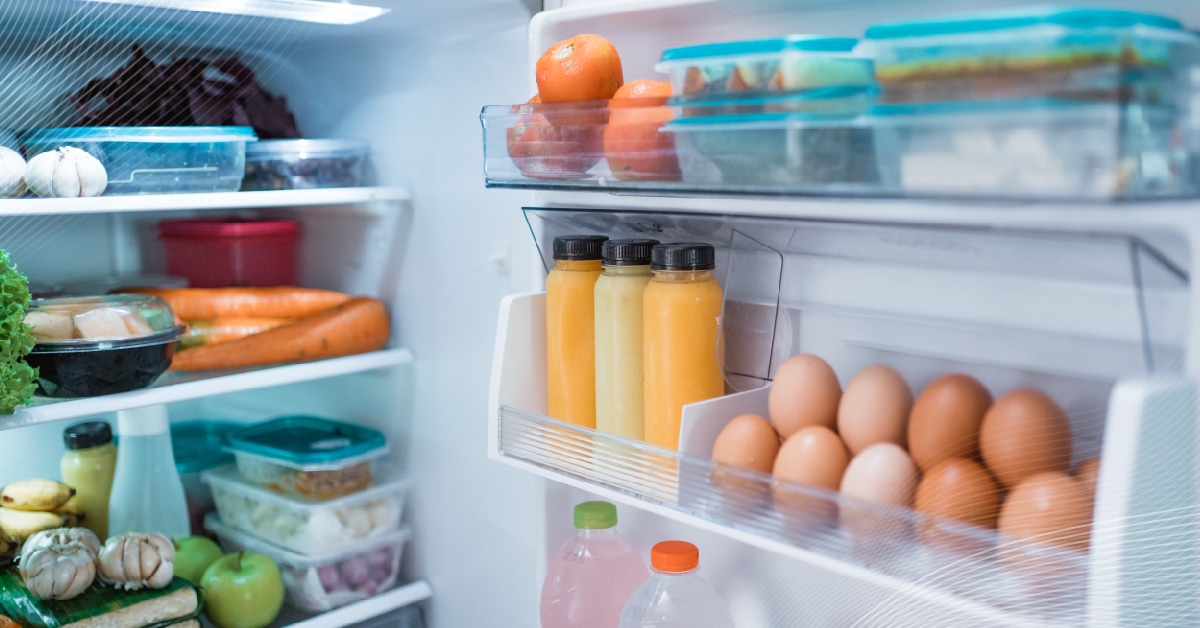A Guide to Food Safety During Power Outages - NEC Coop
Feb 20, 2024 — Electrical Safety, Resources

Food safety might not be the first thing on our minds during a power outage. However, understanding what to do during a power outage is important for keeping your family safe and your groceries from going to waste.
Let’s go over the essentials of food safety after a power outage, with helpful tips to help reduce the impact on your pantry and wallet.
Power outages can happen unexpectedly and can last from a few hours to several days. During such times, one of the most significant concerns that might not immediately come to mind is food safety. While it’s easy to overlook, the state of the food in your refrigerator can greatly impact not just your meal plans, but your health and finances too. With the cost of groceries reaching new highs, a power outage could mean the loss of hundreds of dollars worth of food.
The clock starts ticking the moment the power goes out. According to the Centers for Disease Control and Prevention (CDC), food in the refrigerator begins to spoil after just four hours without power. This short window of time emphasizes the importance of acting quickly and wisely to preserve the safety of your food.
What to do to Keep Food Preserved When the Power Goes Out
Avoid opening the refrigerator or freezer doors. Every time you open the door, cold air escapes, and the temperature inside rises, hastening food spoilage. A refrigerator can preserve food at a cold temperature for approximately four hours when closed, whereas a full, unopened freezer can sustain its temperature for around 48 hours.
Why does a freezer that’s fully stocked keep food colder for longer?
It’s because the frozen items act as ice packs, helping to maintain a cold internal environment. This is why it’s a good practice to keep your freezer filled. If you don’t have enough food to fill it, consider adding containers of water that can freeze and help keep the temperature down.
Get Your Generator Running
For those with a backup generator, turning it on can be a lifesaver for your perishables. If you have a generator, make sure it’s ready to go and that you understand how to operate it safely before an outage occurs.
Ways to Tell If Food is Safe to Eat After a Power Outage
After the power is restored, identifying which foods are safe to eat is important. The rule of thumb is to base safety on the number of hours the power was out. Generally, perishable foods in the refrigerator should be thrown away if the power is out for more than four hours. This includes meat, dairy products, eggs, and any prepared meals.
However, not all decisions should be based solely on time. Use your senses – sight, smell, and touch – to assess food safety. If something looks off, smells bad, or has an unusual texture, it’s better to err on the side of caution and discard it. Remember, tasting food to determine its safety is not recommended, as it could lead to foodborne illness.
For comprehensive guidance on food safety, FoodSafety.gov and the USDA’s Food Safety portal are helpful resources. These sites offer detailed information on how to handle food before, during, and after a power outage, helping you make informed decisions to keep your family safe.
While a power outage presents a range of challenges, food safety should remain a priority. By acting quickly and properly – like not opening the fridge, filling the freezer, using a backup generator, and knowing how to assess food safety – you can minimize the impact of an outage on your food supply. Remember, when in doubt, it’s safer to throw it out. Stay prepared, stay informed, and keep your family safe, even during unexpected power outages.
Sources:
“Food Safety for Power Outages,” Centers for Disease Control and Prevention, https://www.cdc.gov/foodsafety/food-safety-during-a-power-outage.html
“Food Safety During Power Outage,” FoodSafety.Gov, https://www.foodsafety.gov/food-safety-charts/food-safety-during-power-outage
“Keep Your Food Safe During Emergencies: Power Outages, Floods & Fires,” U.S. Department of Agriculture, https://www.fsis.usda.gov/food-safety/safe-food-handling-and-preparation/emergencies/keep-your-food-safe-during-emergencies
Voted #1 Electric Provider
We were recently voted the #1 Electricity Provider by the Corpus Christi Caller-Times’ Best of the Best Awards for the 7th year running!
Benefits of Membership
As a member of our co-op, you’ll enjoy the following benefits:
- You’ll get a share of our profits.
- You won’t be locked into a long-term contract.
- You’ll get a simple, competitive rate with no surprise fees or markups.
- You can get a $50 bill credit for every new member you refer.

